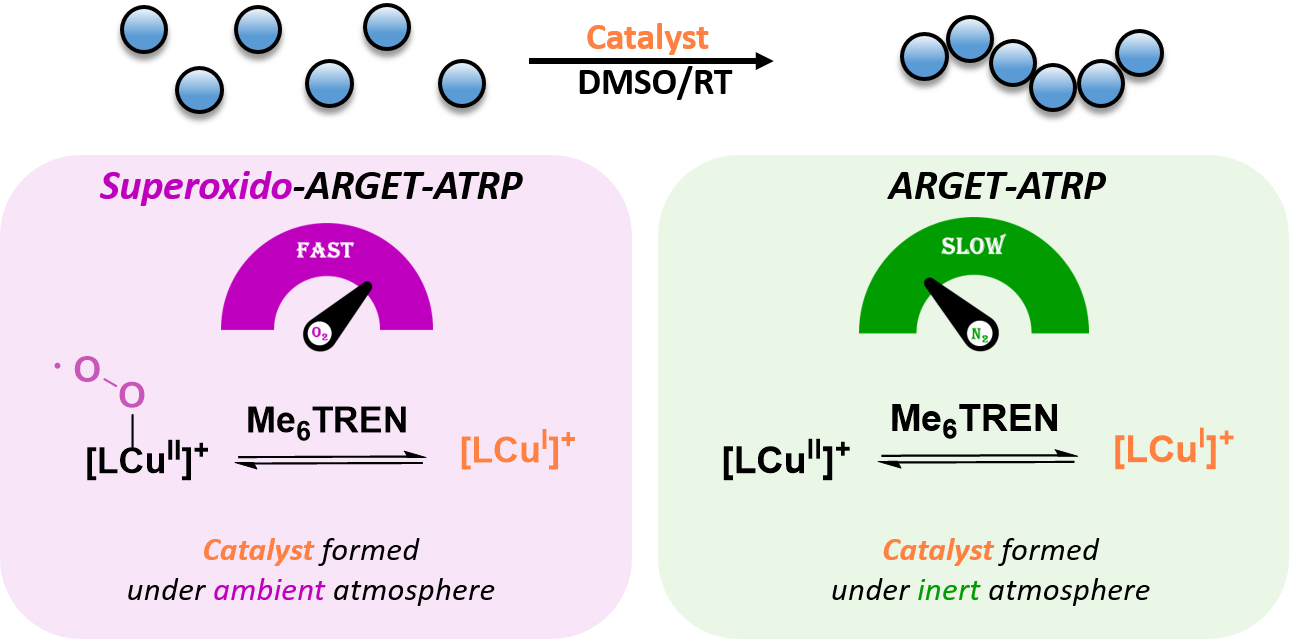Oxygen-Enhanced Atom Transfer Radical Polymerization
The Laboratory of Polymeric Materials reports an unsual Atom Tranfer Radical Polymerization whereby oxygen favors the polymerization by forming superoxido species at room temperature.

Researchers in the Laboratory of Polymeric Materials in collaboration with research groups in Germany, France and the USA have discovered the in-situ transformation of CuBr/L to superoxido species at room temperature. In traditional radical polymerizations, oxygen is typically regarded as an undesirable component resulting in terminated polymer chains, deactivated catalysts, and subsequent cessation of the polymerization. In this work, oxygen triggers the formation of an enhanced-ATRP catalyst leading to faster polymerization rates, enhanced end-group fidelity and faster initiator consumption when compared to the traditional ATRP catalyst. The versatility of the technique was demonstrated by the polymerization of various monomers in a controlled fashion. Notably, the efficiency of our methodology is unaffected by the purity of the starting CuBr, and even a brown highly-oxidized 15-year-old CuBr reagent enabled a rapid and controlled polymerization with a final dispersity of 1.07, thus not only reducing associated costs but also omitting the need for rigorous catalyst purification prior to polymerization.
Kostas Parkatzidis, Nghia P. Truong, Richard Whitfield, Chiara E. Campi, Benjamin Grimm-Lebsanft, Sören Buchenau, Michael A. Rübhausen, Simon Harrisson, Dominik Konkolewicz, Siegfried Schindler, and Athina Anastasaki, Oxygen-Enhanced Atom Transfer Radical Polymerization through the Formation of a Copper Superoxido Complex, J. Am. Chem. Soc. 2023. external pageDOI:10.1021/jacs.2c11757
